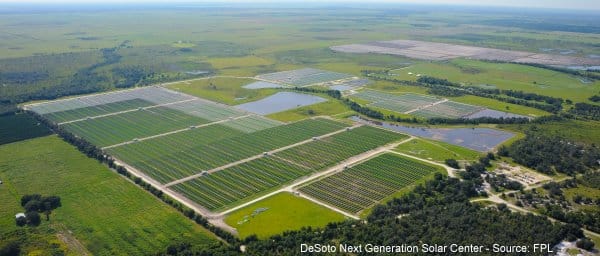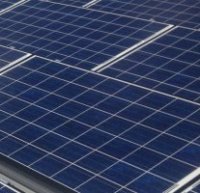Florida Power & Light (FPL) has announced plans to build three new solar power plants totaling approximately 225 megawatts of solar capacity.
One facility will be built in DeSoto County; near Florida’s first large-scale solar farm, another in Charlotte County and the third in Manatee County. More than one million solar panels will be used in the projects.
The new facilities will add to the existing 110 megawatts of existing utility-scale solar plants FPL operates (Martin, Space Coast and DeSoto Next Generation Solar Centers), plus 100 smaller solar arrays in 23 counties.
“Over the past decade, we have continuously focused on advancing reliable, affordable, clean energy for our customers,” said Eric Silagy, president and CEO of FPL. “In particular, we have been working especially hard to find ways to advance solar energy in Florida without increasing electricity costs, and we have developed what we believe will be a cost-effective plan to triple the amount of solar energy we use to serve our customers before the end of 2016.”

FPL says as the cost of solar PV continues to plummet, there is strong potential for the construction of several additional large-scale solar plants in the next decade and the company is analyzing potential sites.
While known as the ‘sunshine state’, uptake of utility scale solar in Florida has been slow compared to other states such as California.
In recent years, FPL has also been weaning itself off dependence on oil fired power generation. Investments in natural gas generation since 2001 have enabled the company to reduce consumption of foreign oil by more than 99 percent – from more than 40 million barrels of oil in 2001 to less than 1 million barrels annually.
FPL serves the third-largest number of customers of any power company in the USA – approximately 4.7 million customer accounts.
Over the 89 years Florida Power & Light has been operating, it’s had a significant impact on the environment; an impact it has been making some progress in rectifying.
A voluntary clean-up of non-hazardous industrial waste streams initiated in 1986 removed 239,000 tons of industrial waste from 13 facilities and since 1996, it has also removed more than 56,000 tons of coal-tar-impacted soils and debris.
Fly ash, a waste product from the burning of coal was once sent by FPL to a landfill. Today, the fly ash is processed for use in the steel-making industry and as aggregate for brick and concrete production, as well as in asphalt.







































